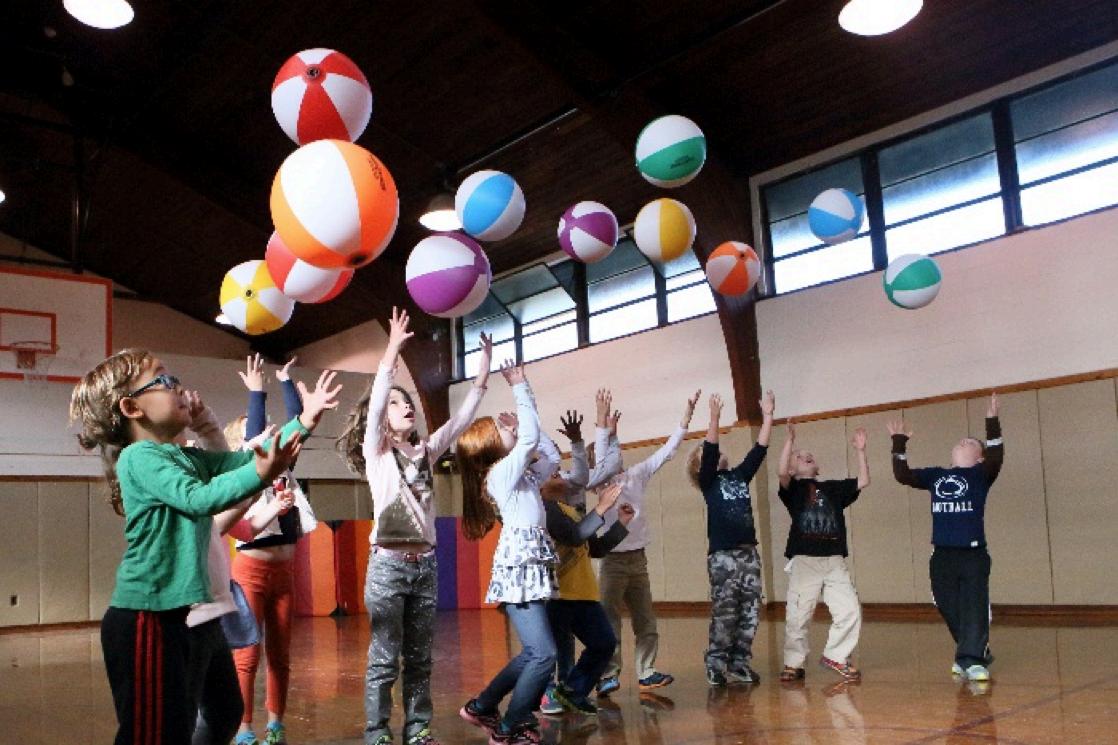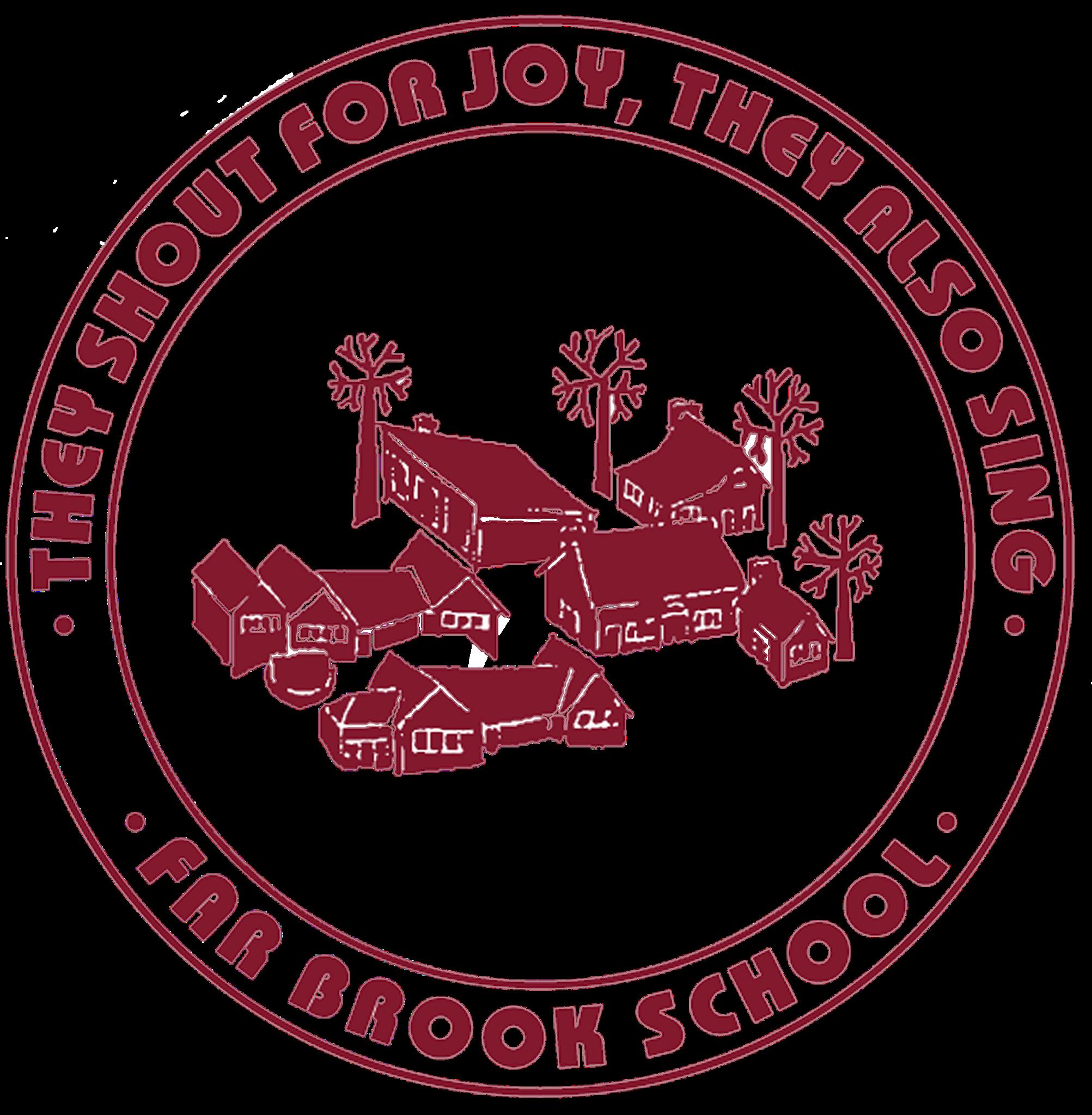




First Grade’s yearlong investigation of Environment and Community encourages students to consider the impact, both positive and negative, that people have on the natural environment. Students develop a deep appreciation for forest ecosystems and an understanding of the vital role that forests play in our well-being-- that the air we breathe, the water we drink, and the food we consume are all supported by forests. Throughout the year, First Graders collect information and present findings through block-building projects, art, and writing about real-life issues related to the protection of forest land close to home and across the globe Through dialogue, debate, and consideration of multiple perspectives about an issue, the students better understand their relationship to the people, places, and resources in their community and beyond Through video, story, interviews, books, internet research, the study of changemakers, as well as art and cultural experiences, students come to deeply appreciate the environment, people, history, and culture of a faraway place The class examines an issue that impacts not only the environment of this place but also the communities of people who depend on trees and forests for their livelihood Equipped with their understanding of interdependence and a sense of responsibility, First Graders at Far Brook finish the year inspired and empowered--connected to fellow citizens across the globe and ready to make choices that will positively impact the environment, and their homes, school, and community
Literacy in First Grade introduces the routines and expectations that support students in developing their identity as a community of independent readers and writers. Students are encouraged to take risks, find joy in reading and writing every day, cooperate in creating a safe and productive learning environment, and value one another’s efforts. Using the workshop approach, learners inquire, investigate, discuss, and construct during whole group mini-lessons, small group instruction, as well as individual conferences. In First Grade, every child is encouraged to think of themselves as readers and writers.
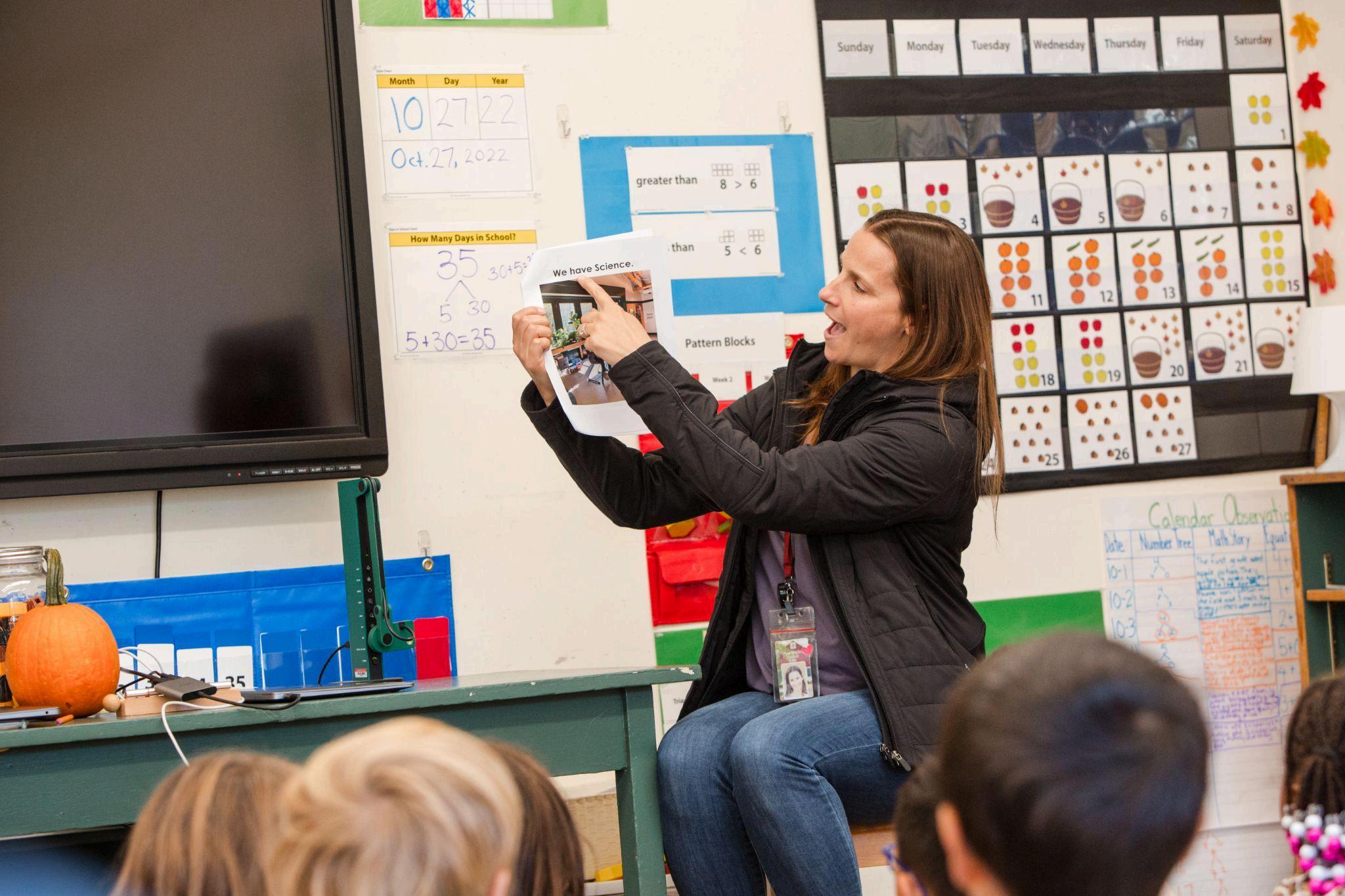
Reading: Our approach to reading supports student’s reading development This approach includes a variety of instructional methods-- read-aloud and discussion, shared texts for whole-group reading to build fluency, phonics, word study, as well as individualized and small group instruction. Some primary goals for first-grade readers are solidifying good reading habits, developing phonemic awareness, phonics, fluency, vocabulary, and honing strategies for making meaning. Through daily lessons, students learn who they are as readers, how to thoughtfully select books, build their stamina, and find joy in books.
Writing: First Graders come to see writing as a way to express their thoughts, beliefs, feelings, and hopes They begin the year learning habits and routines for writing independently, ways to maintain a productive writing environment, and how to take risks and share ideas within a community of writers. As students study different writing genres, they move through the stages of the writing process: planning, drafting, revising, editing, publishing, and finally celebrating their work with peers and family. By the end of the year, First Grade writers develop respect, understanding, and value for everyone’s work, use and care for writing
materials and resources independently, and choose and write topics they care about
Library: First graders continue to develop their understanding of genre, exploring the different kinds of fiction highlighted in the library’s selection of beginning chapter books: adventure, animal, fantasy, historical, humor, mystery, realistic, scary, and sports Through an in-depth study of one author/illustrator (such as Leo Lionni or Ezra Jack Keats), students begin to appreciate the elements of writerly and artistic craft that help to give this author/illustrator’s work its unique style As they become experts in reading a book’s spine label, first graders are given the opportunity to browse the library i ng and spine la her.
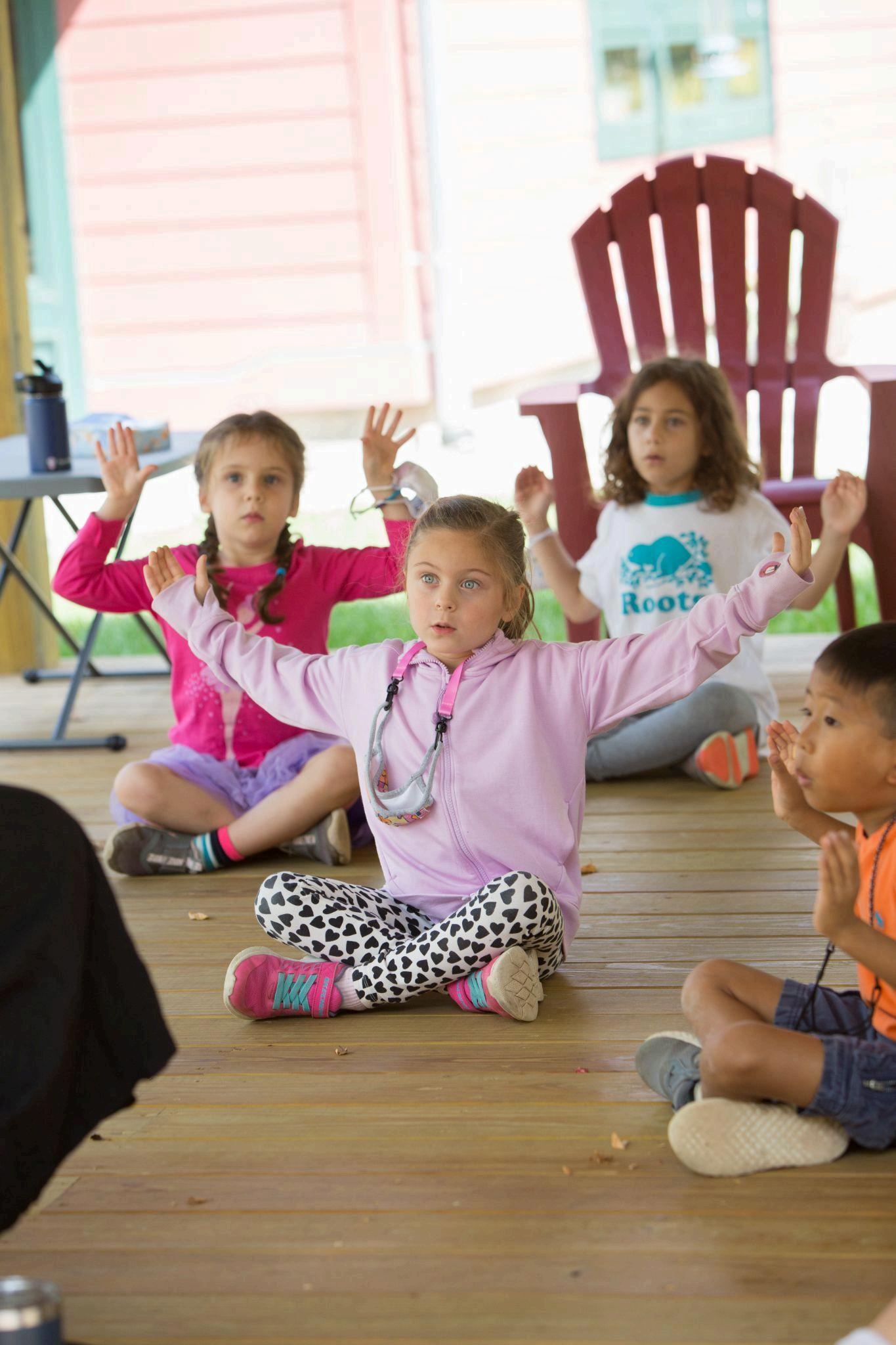
Students in First Grade gain an understanding of number sense and operations, geometry, fractions, measurement, and data. Math instruction is provided using the “workshop model” - students are first introduced to a problem-solving situation, game, or concept through a whole group mini-lesson. Students then break into smaller groups for partnership work and independent practice. Big mathematical ideas are uncovered during whole group shares, or math congresses Students are encouraged to develop their own math strategies at their own pace, while teachers individually guide them toward greater accuracy and efficiency First Grade mathematicians learn how to show their solutions using mathematical models and explain their thinking to their peers
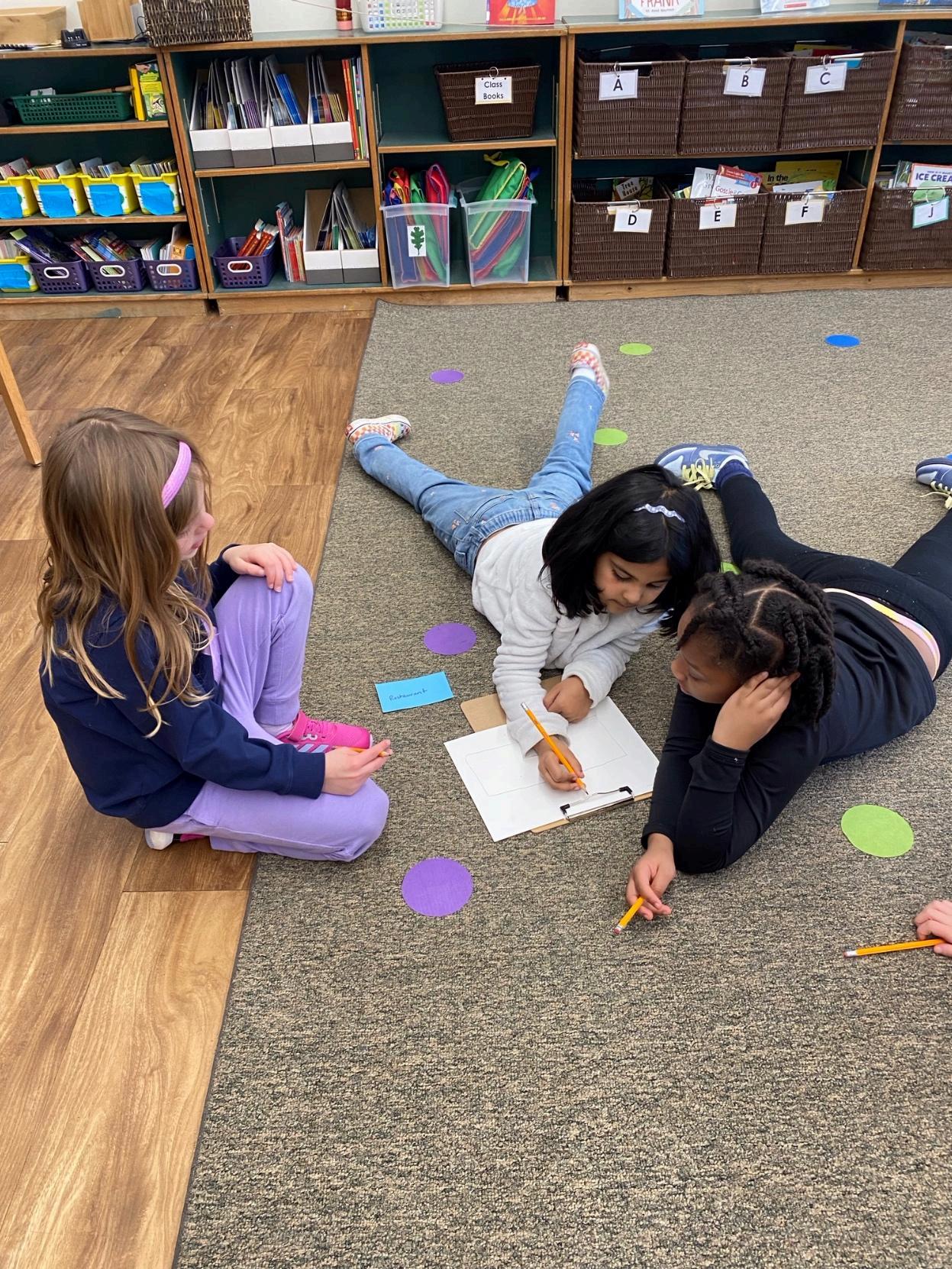
physical change, and chemical change The children have the opportunity to observe change over time in a practical and exciting way as they raise ladybugs, caterpillars, worms, and brine shrimp in the science lab. Students begin to move through the scientific process as we engage in hands-on experiments and observe the results. We also explore environmental topics such as endangered species, and resources from plants, including wood, paper, and especially food. Together, we think deeply about where food comes from, the many steps involved in food production, and the ways we are connected to food through identity. Children continue to develop in their ability to ask questions, to make careful observations, and to share their thinking through drawing, discussion, and collaboration
French and Spanish classes are designed to follow as closely as possible the process by which children acquire their first language. The children are immersed in a
language-rich environment made comprehensible through the use of body language, visual aids and abundant repetition in a variety of contexts The teacher uses mainly story-based activities to bring the language to life. Through careful scaffolding of new and recycled words the children acquire a foundation of basic vocabulary, and simple useful phrases. A typical lesson might include meaningful and personalized conversations, storytelling, music, movement, and a variety of hands-on activities. The instruction is based on topics of interest to the students, as we work in an atmosphere of “comprehended” immersion to promote and accelerate the acquisition of the language.
Music: The First Grade study of patterns is a wonderful launch pad for pattern recognition in music literacy, movement, and aural/visual discernment of form. Students practice simple melodic patterns using the Feierabend system of solfège (do, re, mi), corresponding hand signs and notation, rhythmic patterns using du, du-de, rest (quarter notes, eighth notes, rests), and patterns of meter and phrasing. Students also explore patterns in movement: with partners and individually, in circles, spirals, double circles, standing or sitting, hand clapping, and incorporating movements such as skipping, galloping, floating and marching. We continue to lay more groundwork for healthy vocal technique, critical aural skills, and music literacy via an assortment of American folk songs and games, Far Brook songs, folk songs in foreign languages (such as Spanish, French, Japanese, Maori and Chinese), and formal classical repertoire A unit on formal works related to fairy tales such as Stravinsky’s Firebird and Grieg’s Peer Gynt allows opportunities for integrating lessons in creative movement, poetry, and story-writing
Junior Strings Orchestra: Students in Grades 1-4 are invited to join the Far Brook Junior Strings Orchestra once they reach a certain level of proficiency in their musical skills with violin or cello The Orchestra plays in Morning Meeting Many students who participate in Orchestra also perform in the annual Recital Night in the spring and progress to the more advanced Orchestra for Grades 4-8 which incorporates more students, a wider range of instruments, and more challenging repertoire
Dance: The First Graders begin to gain an awareness of technique and form within their dancing, and learn the process of choreographing work independently within a
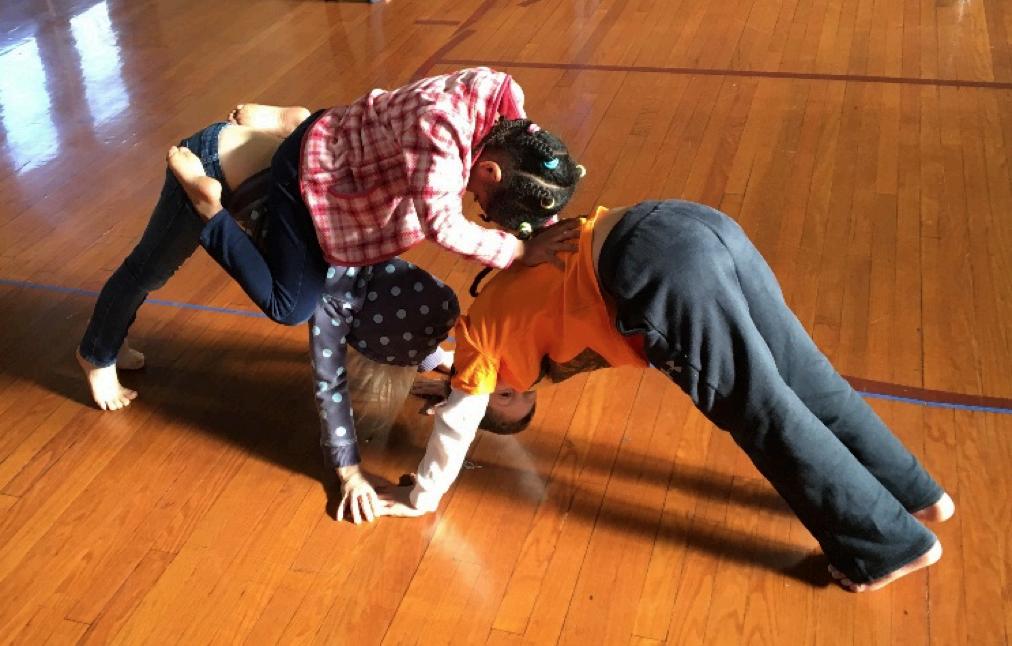
group of peers Focusing on patterns and sequencing and considering the classroom curriculum, the fall semester culminates in an informal sharing of student-created work, using different pathways (circles, zigzags, direct & indirect lines) and working with an introduction to movement canons. Focusing on small group work, listening to others and refining choreography through a series of work-in-progress shadings and reflections, students begin to develop a strong sense of personal artistry and the strength of an ensemble
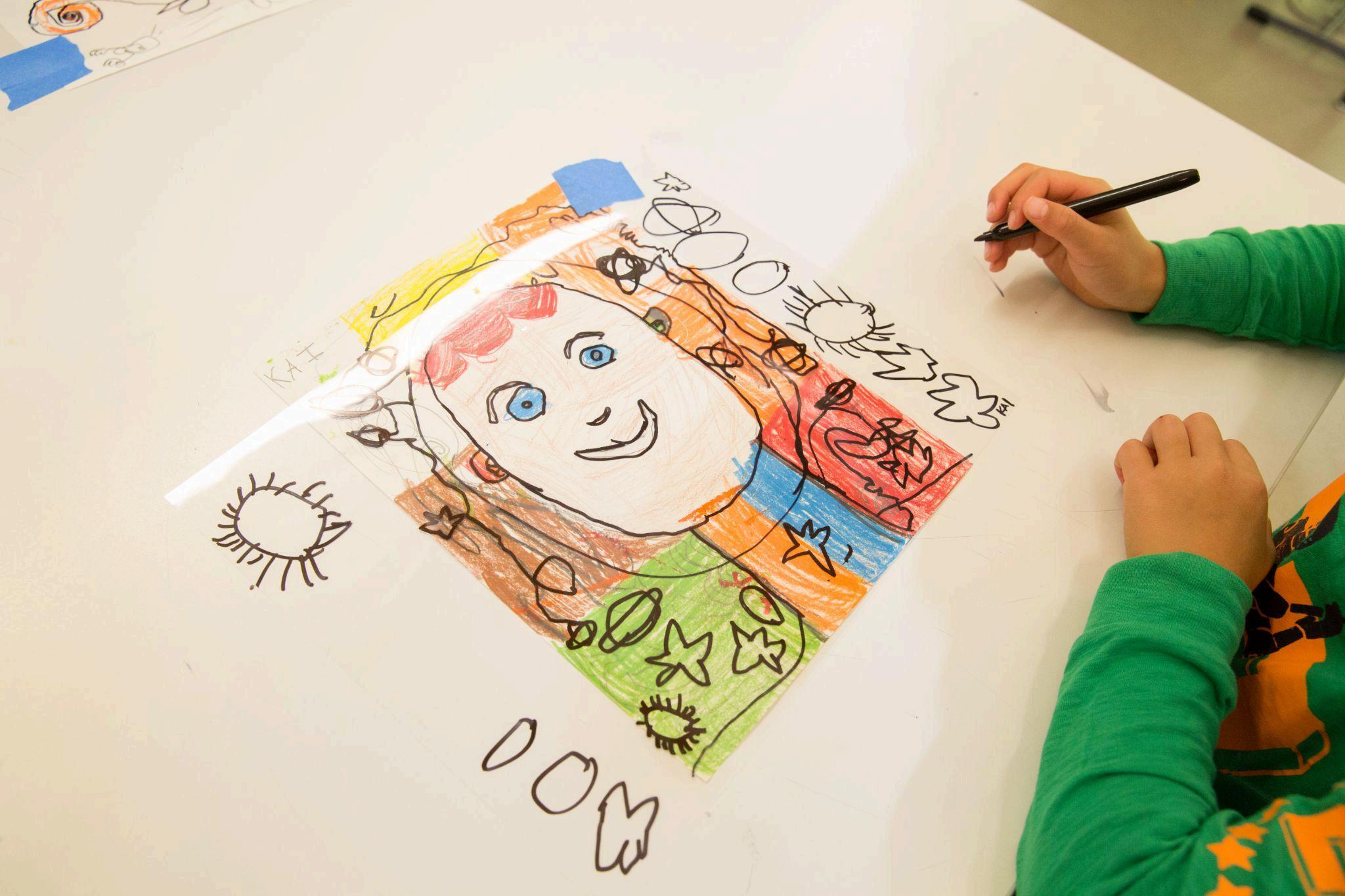
Art: First Grade students continue their development and understanding of color and color relationships while building on their understanding of dimension and space. Portraiture is a central theme to the art curriculum in First Grade Students are introduced to a diverse array of artist’s through their self-portraits In their first mixed-media experience, First Grade students realize a double portrait of themselves titled “The Inside Me, Outside Me ” Inspired by artists like Frida Kahlo and
Kehinde Wiley, students create a two separate self-portraits; One, a simple contour line drawing on transparent acetate, representing the hopes, dreams and aspirations for their “future selves”; and the other is an inner portrait, which is rendered on canvas board, represents the artist as they see themselves in the present. This project invites students to actively develop critical thinking and critical feeling skills, while at the same time offers them opportunities to be introspective and imaginative in their art-making.
Design Thinking and Woodshop: Continuing to build upon the skills gained in Kindergarten, the First Grade students gain more confidence and refine their skills. The First Graders begin the year by exploring simple shapes to create branching patterns and trees from these simple shapes. Throughout the first grade year, students continue to create projects of their own designs, gaining skills and confidence while using the tools.
In order to cultivate students who take action to make the world a more just place, children must first feel good about who they are, take pride in all aspects of their identity, and explore the uniqueness that they bring to the world. The students share and explore aspects of their identity that they share with others and those that make them unique. Lessons that emphasize commonalities and parts of the human experience that are shared by all. Teachers work with the students to create an environment that fosters kindness and compassion toward all, as well as an interest and curiosity toward people who believe different things or live their daily lives in different ways.
First Graders are also introduced to mindfulness practices that help them cultivate greater self-awareness, attention, and self-regulation capacities. Additionally, each week the class learns new tools and strategies from Open Circle, a social-emotional curriculum that proactively teaches students listening and speaking skills, as well as ways to strengthen friendships and problem-solve issues in the classroom and on the playground. Students build a repertoire of strategies for creating a safe, caring classroom community Use of this program throughout the school gives the whole community a common language and set of skills
First Grade students develop and enhance basic motor skills through lead up games, drills, and activities in Sports class Sports strategies are introduced through a variety of games. Activities that involve throwing, catching, kicking, dribbling, and bouncing are refined to help students prepare for team sports games. Students learn to respect others and understand the importance of practicing the Golden Rule - treat others the way you want to be treated. First Grade students rotate through units of soccer, floor hockey, team handball, basketball, and kickball/wiffle ball. Every month the students are introduced to a Sports Changemaker -an athlete who makes a difference in the world through fighting for social justice, fairness and equality
